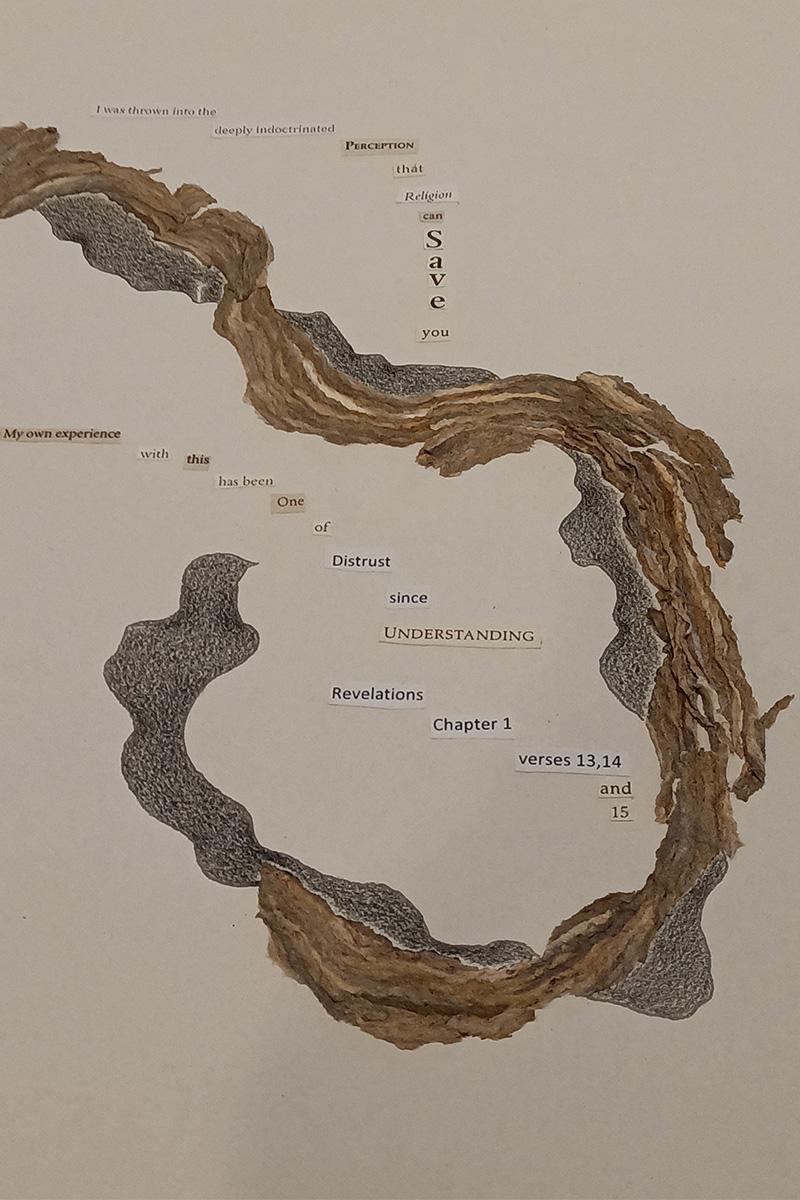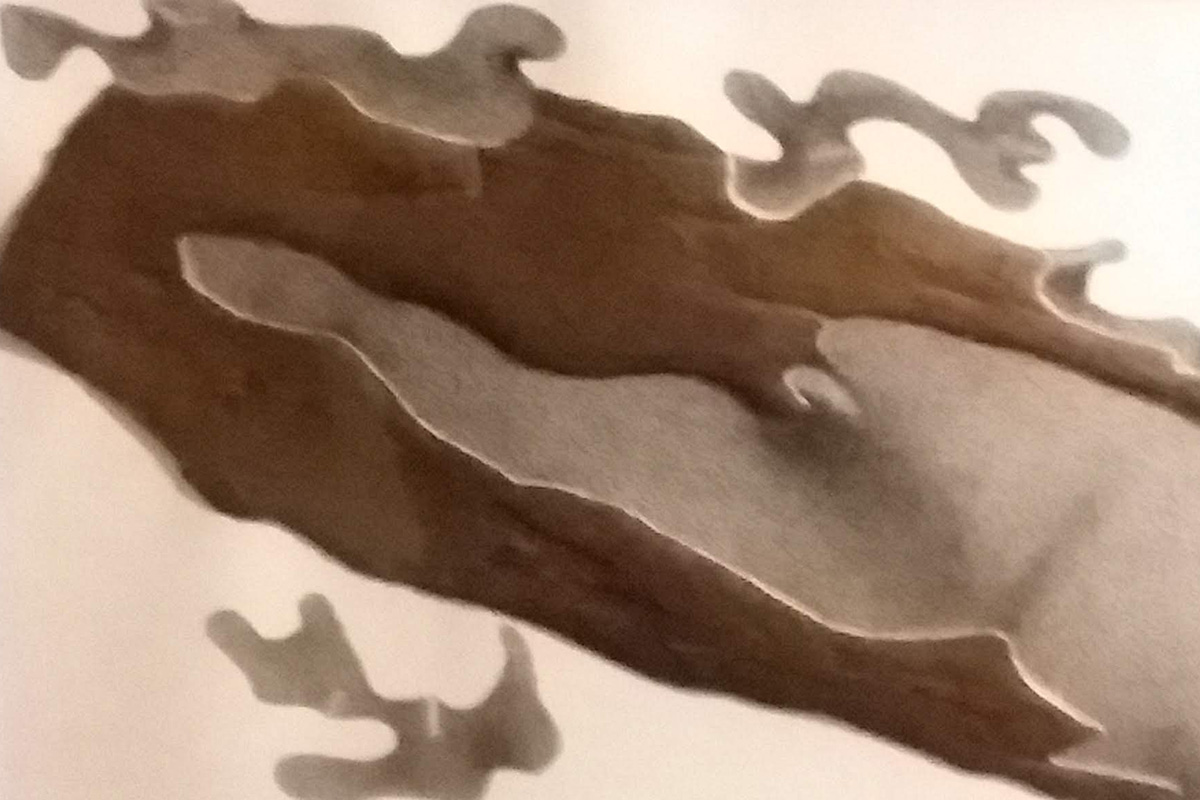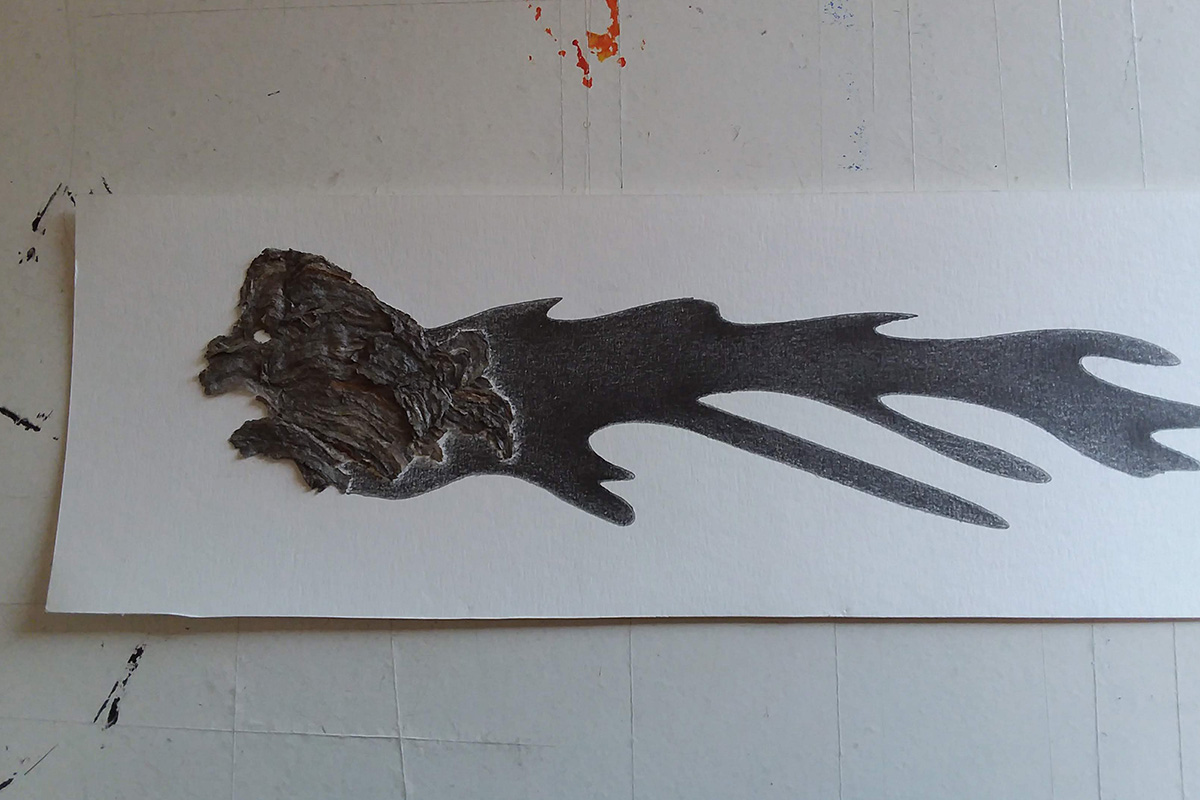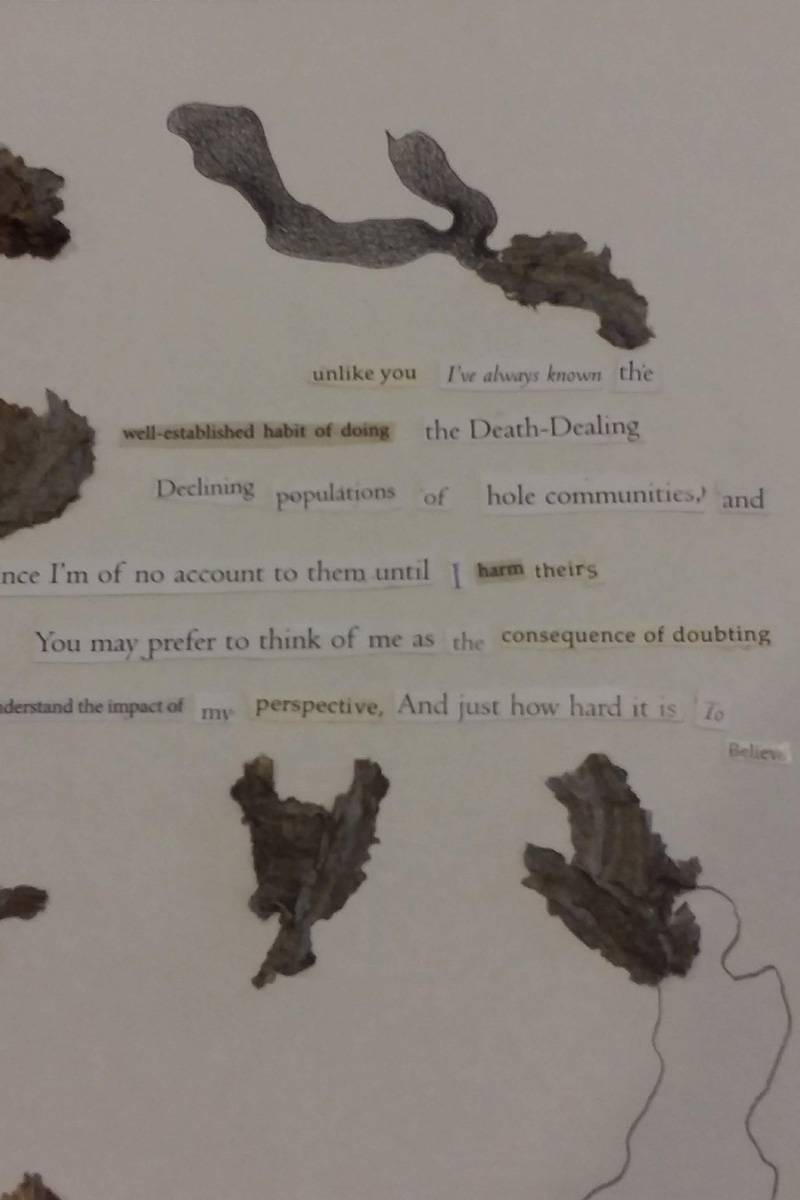
Jesus Me by David Andrews
The Perceptions and Perspectives of Artist David Andrews
Kamala GhaneaBassiri, the Bodnar Curatorial Fellow at the Smith College Museum of Art (SCMA).
If you’ve visited the Smith College Museum of Art (SCMA) before, there's a decent chance you’ve noticed David Andrews at the front desk, hunched over a piece of paper, pulling out words from a tin box or shading in amorphous forms. David started working at SCMA as a Gallery Assistant (GA) over twenty years ago, shortly after moving to Western Massachusetts from Chicago.
While he was a GA, he took a CAD design class that taught him how to translate three-dimensional forms onto a two-dimensional plane, a.k.a. a sketchbook he used to kill time in the galleries. Inspired by cloud formations, Escher's drawings, Hans Arp's forms, and Whitfield Lovell's shading techniques, David describes making art during this time “with no real thought given. I mean a shape would come to me but that’s all it was. It was just a shape that I’m gonna take from a two-dimensional shape and turn it into a three-dimensional sculpture on paper.”

David Andrews' first work using graphite on paper
After being promoted from GA to Security System Specialist, David was noticed by a faculty member at Smith who introduced him to Brian Foote, now the Director of Arts and Culture for the City of Northampton. Brian gave David his first show in 2012 and launched him into the Northampton art scene where he has gone on to exhibit his work at many other venues in the area.
While David initially worked with graphite on paper, he eventually started incorporating new materials into his work like sycamore tree bark, kimchi tree bark, and hornet’s nest. David saw the nebulous forms he was creating in graphite echoed in these natural materials. He started pasting them onto paper, fusing them with his drawings and paving the way for the newest addition to his work: text.

Lion's Roar by David Andrews, made with hornet's nest and graphite on paper
For David, intertwining the tree bark, hornet’s nest, graphite and text was “kind of a level up.” He says that now there’s “a lot more thought put into it because I’m really trying to say more.” The first piece David made with text is titled Dope Man. It reads:
unlike you I’ve always known the
well-established habit of doing the Death-Dealing
Declining populations of hole communities, and
Since I’m of no account to them until I harm theirs
You may prefer to think of me as the consequence of doubting
understand the impact of my perspective, And just how hard it is To Believe

Dope Man by David Andrews
David sources text from around eight books, although he uses When Things Fall Apart by Pema Chödrön, an Afro-American poetry chapbook, The How by Yrsa Daley-Ward, and Push by Sapphire the most. During our conversation he described his process in more detail:
What I do is I kind of speed read and if something strikes me I’ll cut it out and throw it in my tin of words and then what I do from there is if I’m using the text, and I don’t always use the text, but if I’m using text I take it out of my little tin and start to drop them on the counter and flip them all over so that I can read them and pick through and match up what I have in my head that’s going on and what’s on the counter so I can come up with one liners or whole paragraphs.
His transition into more text based works was inspired by his experience at a poetry clinic with Lyrical Faith. It was there that he saw the utility of incorporating words to express his own perceptions and perspectives and challenge his audience's world views.
If you want to see David's latest work, come to the opening of his solo exhibition Perceptions and Perspectives on February 8th from 5 to 8 pm at 50 Arrow Gallery in Easthampton!